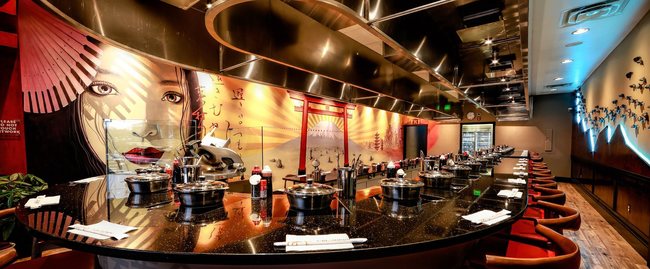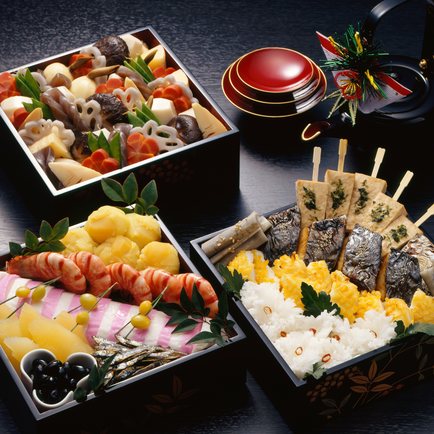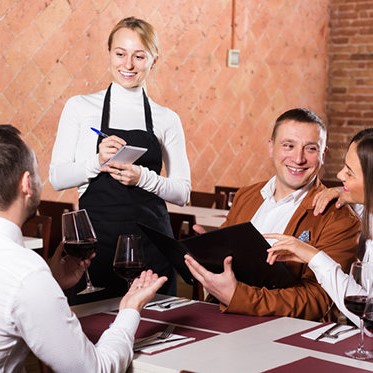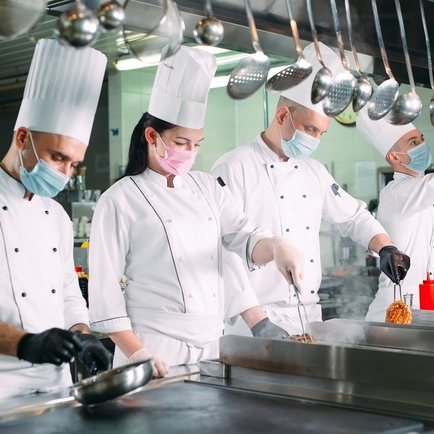Jul 09, 2020

Restaurants and beverage shops usually originate from passion and end with “out of business”. Otherwise, the owners have to exhaust themselves without any profit and the passion gradually turns into misery. This is because passion alone is not enough to run a restaurant. You also need a mission to have a chance of success.
Particularly at the first step before investing, entrepreneurs have to assess whether there is any possibility for their investment in the restaurant to turn a profit and whether the capital recovery is worth the investment. A lot of people don’t do this, which means they are investing blindly. However, if entrepreneurs conduct a financial feasibility study, they will be able to evaluate the possibility of capital recovery and get an initial answer for whether they should invest in a restaurant.
The first thing you need to know is where the funds are spent.

The first set of data entrepreneurs need for their financial feasibility study is what the funds should be spent on and in what proportion. For example:
- Funds invested in the construction of the restaurant. What is included? Analyze all the details.
- The working capital needs to be sufficient in case of emergencies with potential impact on the restaurant’s financial status. This fund would then be used, so the restaurant could continue its operations.
- Pre-opening expenses. What do you need? Some examples include marketing costs, locations survey expenses. Even expenses for visiting other restaurants to find inspiration, consultation expenses and learning expenses are included in this portion.

For example, consider the ingredient costs and operational expenses. Once you combine these sets of data, you can deduct the estimated expenses from the estimated income and you’ll get the net profit, which is still not the real profit because net profit is an accounting profit. Profit in this definition might be in the form of assets such as buildings and equipment.
Another figure you have to find is the net cash flow, or the real income and expenses, to know how much net cash flow you have for each day.
All of this information will tell you how much you’ll have to invest in your restaurant, how much income you’ll earn each day, month and year, and how much time it will take for the net cash to equal the amount you invested. The most important thing in this evaluation is that the analysis has to be based on real data and not your own guesses.
The goal of a financial feasibility study is so you’ll know the following four returns:
- Return on investment from net profit/investment fund.
- Capital Recovery Time – From the time of investment, how many months or years until the capital is recovered?
- Net Cash Flow – This is the money that will return to you in the future as the current value. When compared to the current investment fund, which figure is higher?
- Rate of Return on Investment – What will the percentage of the return be?

How do you manage your investment fund, so you don’t go over budget?
Let’s delve into the details of the investment budget. What do you have to do when allocating and managing funds so you don’t go over budget? First of all, you have to know what type of restaurant you want to open. What is your restaurant’s concept? What’s your target market? How big is your restaurant? How do you need in investment funds? Use this as your preliminary information. Then take a look at the minor details such as the following:
Deposit
If you’re renting a space, how much is the rental cost? How much is the deposit? Most people overlook the deposit, resulting in miscalculation of their funds. For example, if the capital for your
restaurant is set at 100,000 baht, but the landlord demands a deposit of 4 months in advance and the fee for each month is 100,000 baht, making it a total of 400,000 baht, this immediately becomes a problem because you didn’t prepare for it. Therefore, don’t forget to check the rental conditions thoroughly.
Design and Decoration Costs
Design and Decoration Costs

Kitchen and Service Equipment Costs
You have to specify in detail what items you need. You can talk to the interior designer or architect about your needs, so they can know your budget. That way, they can design your restaurant to suit your budget and basic needs.
Advertisement Costs
This is another cost people tend to overlook when initially setting the budget, but tend to think of later, thereby resulting in increased costs. You have to be clear from the start about how you’re going to advertise, how much you’re going to spend on it and what kind of sign you want for the front of your restaurant.
Cost of Ingredients for Opening the Restaurant
This is another one. Most SMEs have to pay it later, because they didn’t put it in their budget in the first place. You have to specify how much money you’ll need for the cost of ingredients for opening your restaurant, so you can properly plan and manage your ingredients.
Other Costs Involved with Opening the Restaurant Such as Permits
These costs might not be high, but they also need to be included in your investment budget.
Pre-Opening Employee Cost
A lot of people might ask why they have to pay employees if their restaurant hasn’t opened. Don’t forget, you have to receive applications, screen employees and train them before opening, so you also have to pay them.
Public Utility Costs, Supply Costs
Water, electricity, meter deposit, paper, pen and other miscellaneous fees all have to be included.
Reserve Capital
This fund also has to be prepared. When your restaurant newly opens and customers don’t know about it yet, you won’t earn any income. However, there are still expenses every day, so you need a backup fund for paying the expenses to keep your restaurant going for a while. Your reserve capital should be enough for at least 3 months.

Example on How to Calculate the Return on Investment (ROI)
Now that you know the details and lists involved in the investment analysis, let’s create an example we can visualize. Let’s say that, based on the analyzed information, your restaurant will spend a total of 9,000,000 baht. From the marketing data collected, let’s say your restaurant will have 3,000 customers per month or 100 customers per day and an average income per person of 400 baht. That means your restaurant will have a monthly income of 1,200,000 baht with a 35% food cost or 420,000 baht and other expenses, such as wages, rental fees, water fees and electricity fees, of about 500,000 baht.
Monthly sales per month: 1,200,000 baht
Monthly food cost: 420,000 baht
Total monthly expenses: 500,000 baht
= Monthly profit: 280,000 baht
Yearly profit = 3,360,000 baht
Use this data to calculate the return on investment (ROI) as follows:
Calculation formula = net profit divided by capital multiplied by 100
3,360,000 / 9,000,000
= 0.3733 x 100
= 37.33% per year
The question is Is 37.33% a year high or low? Think about it. If you took make a deposit of 9,000,000 baht at the bank, at the current interest rates, or invest the money in another business, would you get a 37.33% return per year?
In addition, if you want to know how long it will be until the capital is recovered, calculate by using the following formula:
Capital recovery calculation formula = Investment amount divided by net profit
Restaurant investment fund: 9,000,000 / 280,000 = 32.14 months or 2.68 years
If you think a recovery time of over 2 years for an investment of 9 million baht is acceptable, then go for it. However, if you think it’s too long and you want a faster return, one way to do it is to go back and review your investment fund to see how much you can reduce.
There are still many other important details that people who want to invest in a restaurant should know. Every detail affects your decision to invest and how the funds will be modified to ensure a desirable capital recovery period. You can learn all these additional details in our free restaurant feasibility study course, click
Click to read other articles here:
